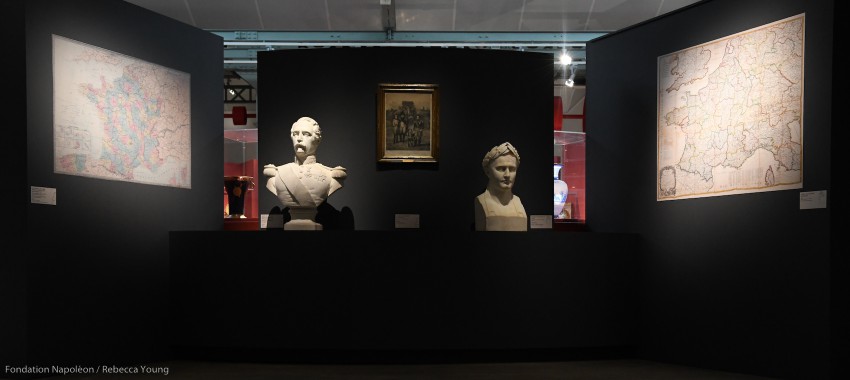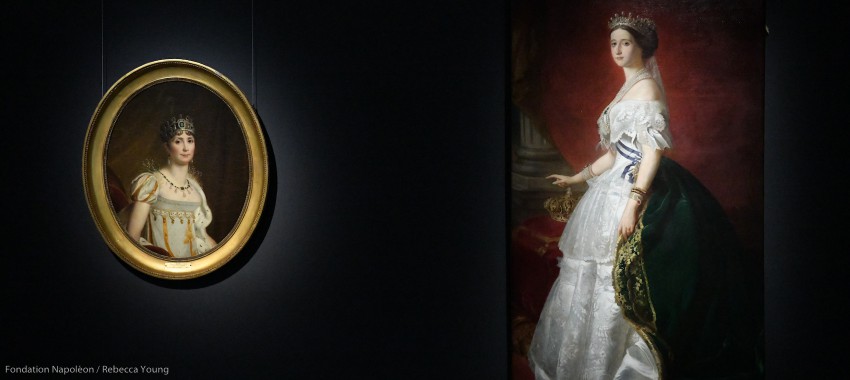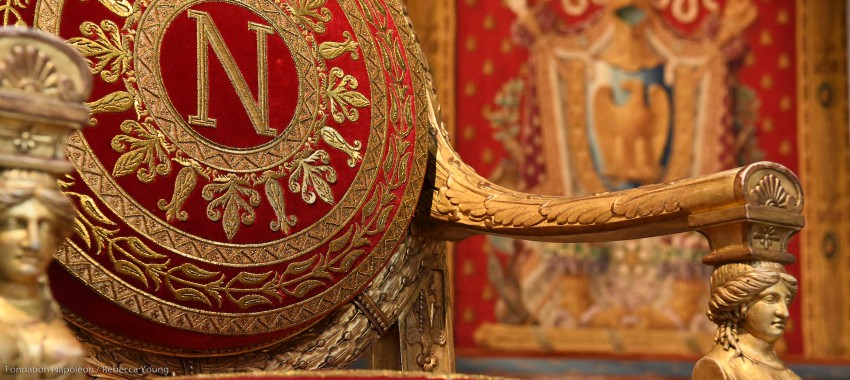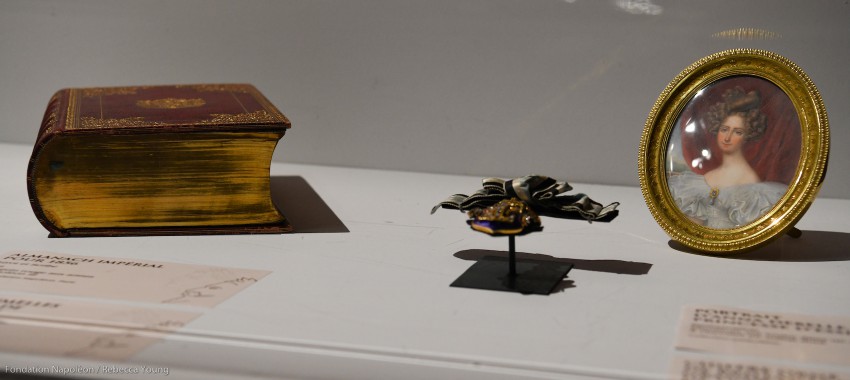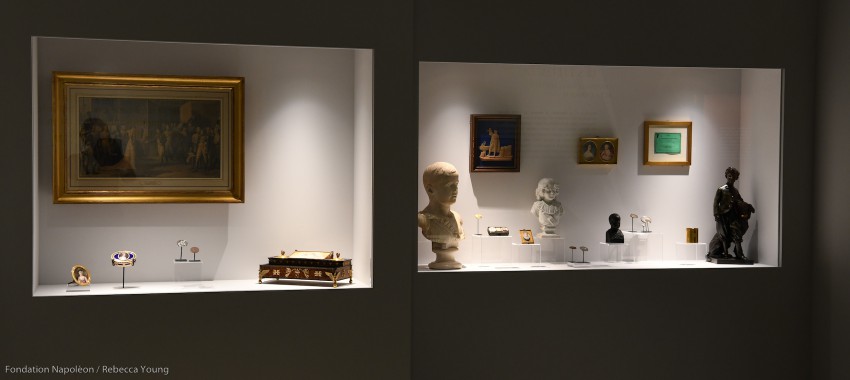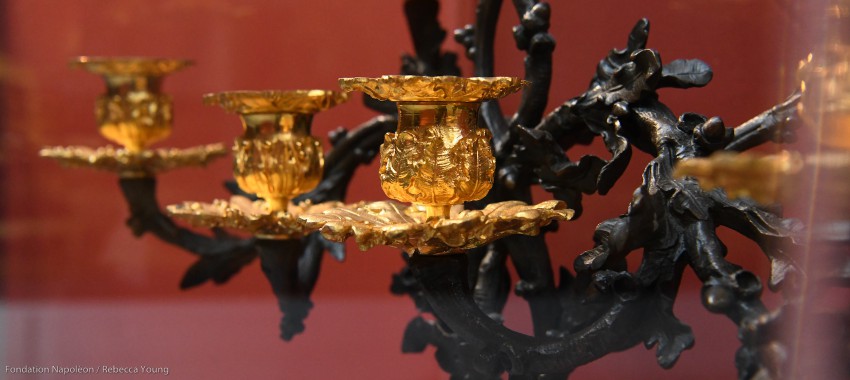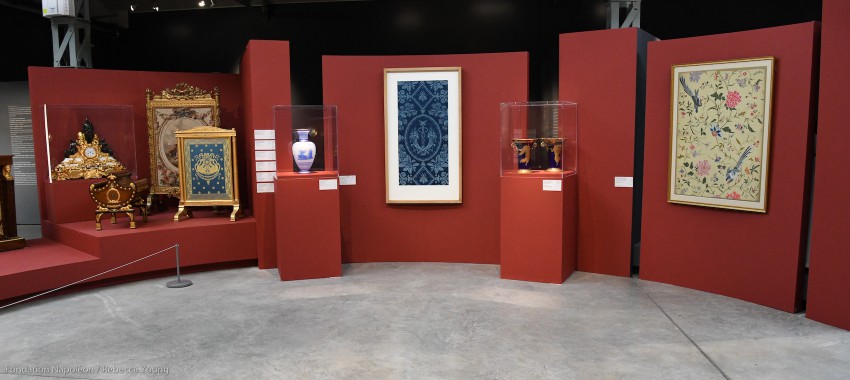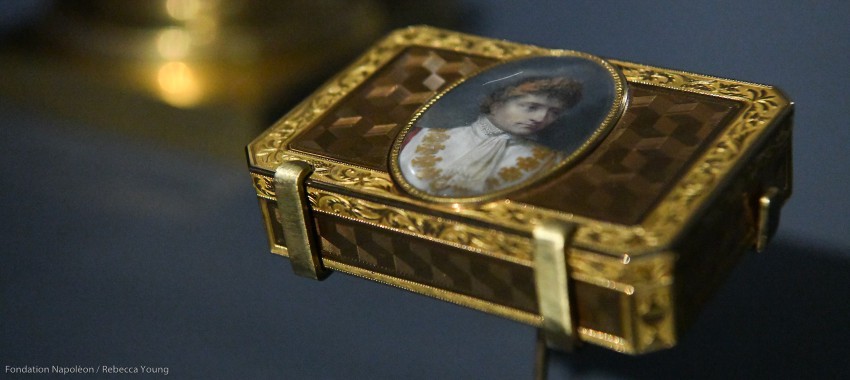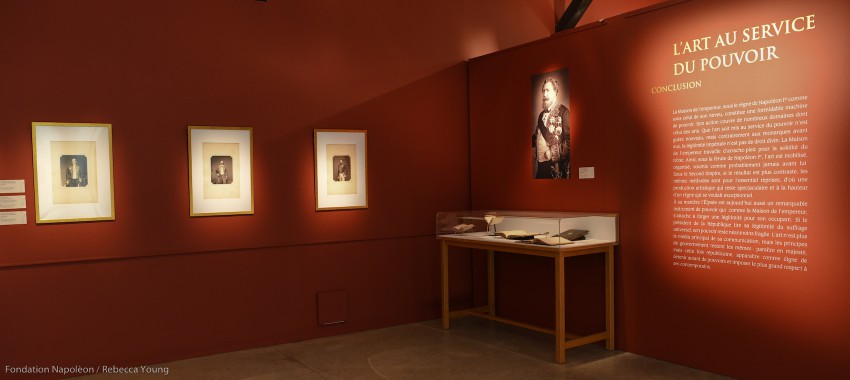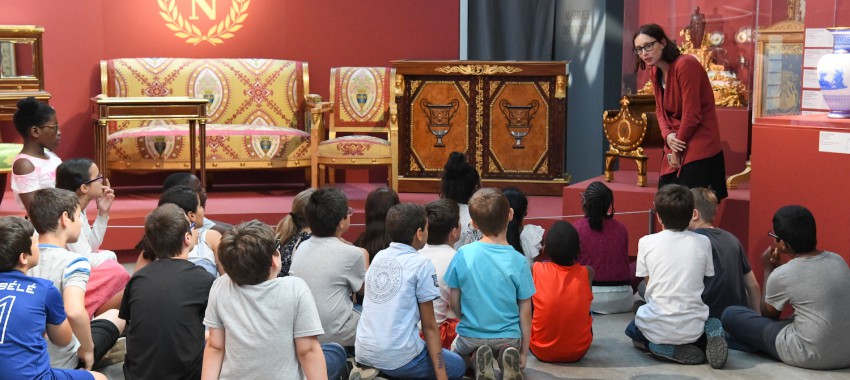Art in the Service of Power: Napoleon I and Napoleon III
Title of the exhibition in French: “L’art au service du pouvoir. Napoléon Ier, Napoléon III”
The exhibition “Art in the Service of Power: Napoleon I and Napoleon III”, created in partnership between the Fondation Napoléon and the town of Rueil-Malmaison, brought together more than 200 works and exceptional artifacts, produced by master craftsmen (the Jacob brothers, Odiot…) and the leading manufacturers from the period (Les Gobelins, Sèvres, La Savonnerie,…). The majority of exhibits belong to the Fondation Napoléon’s art collection; other works were loaned by the Musée d’Orsay, the Château de Malmaison, the Palais de Compiègne, the French Mobilier National, and some were from private collections.
Presentation
After the chaos of the French Revolution, Napoleon I transformed the Republic into an Empire and proposed a new image of power where the legacy of the Ancien Régime was mixed with innovations. In order to leave his mark on the period, the Empire style was imposed on dozens of palaces in France and abroad. The arts were employed in the service of imperial greatness. All the Parisian workshops were set to work to demonstrate Napoleon’s glory, with the participation of talented artists such as David, Gros, Ingres, Canova, Girodet…
Napoleon III continued in the same vein as that of his uncle, with a sustained artistic policy. The decor of the Second Empire was sumptuous. The arts benefitted from technical progress that promoted the reproduction and dissemination of works chosen by the sovereign, those of an official art supported by qualified institutions: the Académie des Beaux-arts and the Ecole des Beaux-arts, the “Salons” and as well as museums.
In presenting prestigious works commissioned by both the French Emperors’ Households (the mainstays of imperial communication) the exhibition “Art in the Service of Power: Napoleon I and Napoleon III” proposes an original approach that allows us not only to re-interpret the extraordinary career of these two Emperors, but also to revisit 19th-century French art.
An exhibition organised into three sections:
The Emperor in majesty
Two sovereigns – a single dynasty
Coronation and Marriage: mobilising art in the service of power
The official portrait
Places of opulence
The Throne Room
Art in the imperial palaces
The Imperial families and their private spaces in the palaces
The propaganda machine, behind the scenes
The Emperor conqueror, builder, and law-maker
Factories, World Exhibitions and official gifts
The Sovereign households and the staging of power
Place: L’Atelier Grognard, Rueil-Malmaison (92500)
Dates: 13 April – 19 July 2018
Curators: Pierre Branda, Xavier Mauduit, Élodie Lefort
Scenographer: Anne Gratadour
Number of visitors: 5 600 people
Images: © Fondation Napoléon/Rebecca Young
Watch a video of the Exhibition (in French)
23 March 2018, updated 5 March 2019

